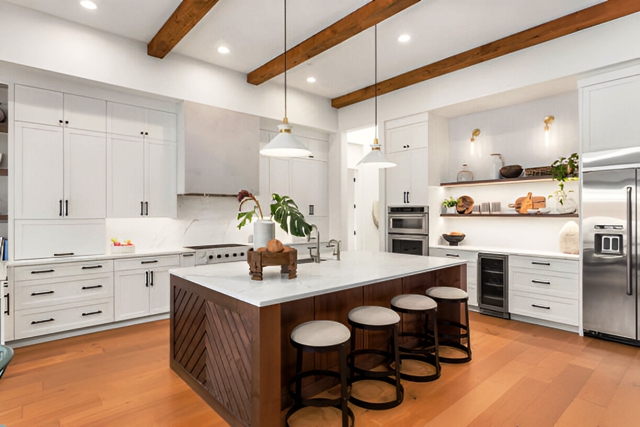Modular Kitchen Design is one of the most innovative types to be embraced in the opening of new kitchens and remodeling of other existing ones. This new concept of laying out kitchen and designing the units contain a series of manufacturing and assembling modules or elements that could be tailored and positioned as per the desires and needs of the clients. In this article, we will understand how modular kitchen is beneficial, what parts are essential while designing and some tips that may be helpful while designing one.
Advantages of Modular Kitchen Design:
Customization: They are easy to modify in terms of colors, finishes and arrangement depending on the homeowner preference and needs of your kitchen area.
Space Optimization: The format of the utilization of space in this kitchen technology makes optimal use of the space that is available by subdividing the kitchen into smaller sections. They are particularly useful in small or atypical shaped kitchens allowing for alternative layouts that would not otherwise be possible.
Ease of Installation: Modular kitchens as mentioned above are ready made furniture that can be integrated swiftly and that does not takes a lot of time.
Flexibility: With the idea that a modern kitchen can be easily redecorated or adjusted in the future, new finishing materials or additional furniture units can be installed without significant reconstruction work.
Efficient Storage Solutions: These kitchens include features that provide storage options like drawers that can be pulled out, unit corner, and even cabinet wall mount, which makes it easier to manage the kitchen space without feeling cluttered.
Aesthetics: Such kitchens also come with elegant and stylish designs cutting across the standard modish look of mostly new age homes. Available drywall finishes offer a variety of visual aesthetics and durability with colors, textures, and glass options.
Key Components of a Modular Kitchen
Cabinets and Drawers: Different types of cabinet and drawer include base units, wall units, a tall unit, and more within modular kitchens. They come in different sizes, and you can have them in your preferred design or color, depending on your requirements and desire.
Countertops: These types of surfaces can be comprised of granite, quartz, marble, and laminate and can be used in modular kitchen designs as they are heat-resistant and stain-resistant as well as being easy to clean.
Work Triangle: In modular kitchen planning, the most important aspects are the location of equipments, namely sink, stove and refrigerator collectively known as the work triangle or the traffic lane through which most of the movement in the kitchen occurs.
Appliances: Some models of cooking utensils or washing machines and dryers can be incorporated into the functional unit or may be a separate unit installed as a component of the design, such as kitchen ovens or MICROWAVES, dishwashers, refrigerator or deep freezers etc.
Lighting: The illumination in a kitchen is something that has to be of quality since most of the work in that area takes place during the evening most of the times. Modular kitchens have incorporated the aspects of task lighting which includes the under-cabinet lighting and other features that offer the ambient lighting effect.
Accessories and Hardware: Appliances and different trims such as handles and knobs, pull out trays and spice racks etc. are functional utensils and enhances the beauty of Modular kitchens.
Tips for Designing a Modular Kitchen
Assess Your Needs: Before making a decision for the type of flooring to use, think about the cooking practices that will be made on the floor as well as the storage and functionality of the space. The reason is simple: this information will help you decide which modules and layout to choose.
Choose Quality Materials: Maintain high standards of quality in materials such as cabinetry, countertops, and any hardware used by choosing materials that are long-lasting.
Plan for Adequate Storage: Take into consideration the kinds of things you will be doing and ensure that you create a balance of both fixed and floored cabinets. Make use of the high areas with high cupboards and bookshelf.
Incorporate Efficient Work Zones: Make a effort to plan a specific zone to prepare food and eat as well as separate area to wash dishes and utensils.
Prioritize Ventilation: With smoke, odor, and heat being some of the problems found in a kitchen, proper flow of fresh air is mandatory so as to be in a position to carry out the following functions effectively. Carrying out a proper installation of chimney or exhaust fan should be considered.
Focus on Ergonomics: Make sure that appliances and utensils are properly placed in the kitchen area with the most commonly used items easily accessible and not too high up.
Modular furniture for kitchen provides the quality of effective yet elegant look and feel in today’s kitchen. Thus, it is evident that homeowners can design a kitchen that meets their needs and aspirations by noting the major components of kitchen, the benefits that come by developing good kitchen and practical ways of designing a good kitchen.

